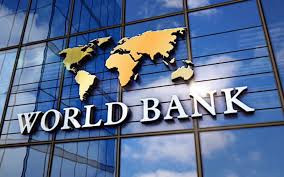
THE World Bank has revealed that macroeconomic vulnerabilities and a challenging business environment continue to raise the cost of doing business in Zimbabwe and slowing the pace of structural transformation.
For years, the economy has been under pressure, choked by headwinds such as exchange rate volatility, power and water shortages, high taxes and declining disposable income, among others.
Other major challenges include a US$21 billion debt overhang and rising corruption, estimated to cost the country US$2 billion annually.
“Macroeconomic vulnerabilities and a challenging business environment raise the cost of doing business in Zimbabwe, increasing informality and limiting the pace of structural transformation,” the World Bank said in its latest economic update for Zimbabwe.
“In 2024, El-Nino-induced drought triggered a state of national disaster, significantly affecting agriculture, an important sector of Zimbabwe’s economy that largely depends on rain-fed crops. The investment climate is further hampered by inadequate electricity supply, as the drought has resulted in power shortages at the Kariba hydro-power station.”
The World Bank noted that public debt remained high, unsustainable and in distress, limiting access to international financing.
Access to such funding could lead to restoring the country’s total capital needs, which the Treasury noted in 2021 totalled US$40 billion.
“Due to the accumulation of external arrears and legacy debts, total public debt reached US$21,2 billion in 2023 (96,6% of GDP). Fiscal risks remain elevated due to wage bill pressures and borrowing on non-concessional terms. Persistent challenges in deficit financing have exerted pressure on the ZiG,” the bank said.
- Zim has 2nd highest rising food prices: WB
- 'Market discipline difficult to maintain'
- Govt policy unpredictability destroying formal economy
- UZ fiasco shows govt is aloof
Keep Reading
“To restore debt sustainability, there is a need for increased domestic resource mobilisation, fiscal consolidation, improved public debt management, growth-enhancing structural reforms and the resolution of external arrears.”
The bank pointed out that poverty reduction is constrained by structural factors, including macroeconomic volatility, low-productivity agriculture (combined with high correlation between weather shocks and agricultural production), few social assistance programme, and high inequality in income and human capital endowment.
“After several years of high growth (following the COVID-19 pandemic), growth declined to 2% in 2024 due to the El Niño-induced droughts, lower mining prices and macroeconomic instability. Ongoing power shortages have contributed to decreased industrial growth and disrupted winter irrigation,” the bank said.
“Inflationary pressures have moderated since the April 2024 introduction of the new Zimbabwe Gold (ZiG) currency, but the exchange rate continues to be under pressure (as evidenced by a sizeable devaluation in late September 2024). The currency volatility limits formal sector production and undermines companies’ and individuals’ planning.”
Macroeconomic pressures also persist on the fiscal side.
“The transfer of Reserve Bank of Zimbabwe’s external debt to the Treasury, together with increased capital spending in 2023, has resulted in steep increases in the Treasury’s debt servicing costs,” the bank said.
“At the same time, the drought has increased fiscal pressures for drought-response and undermined tax collection. As such, fiscal consolidation and discipline are key to macroeconomic stability going forward.”
Economic growth is projected to recover to about 6% in 2025 once the influences of the drought begin to wane, especially on agricultural production and hydropower generation, and ongoing investment initiatives start to increase mining and manufacturing production.










